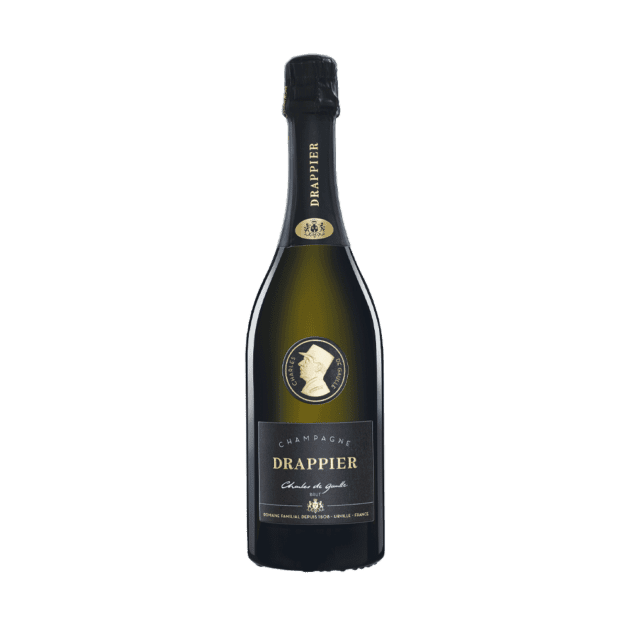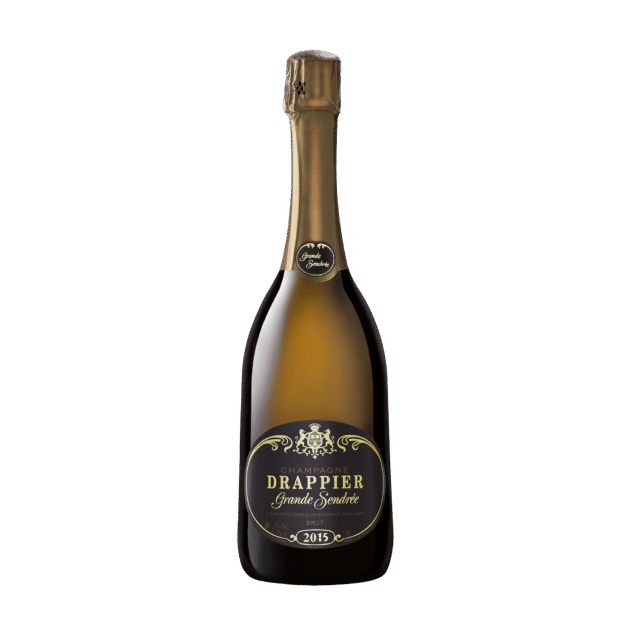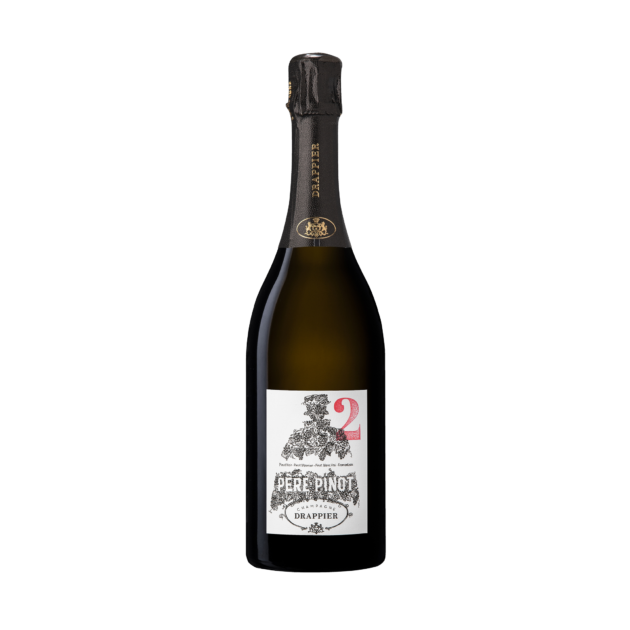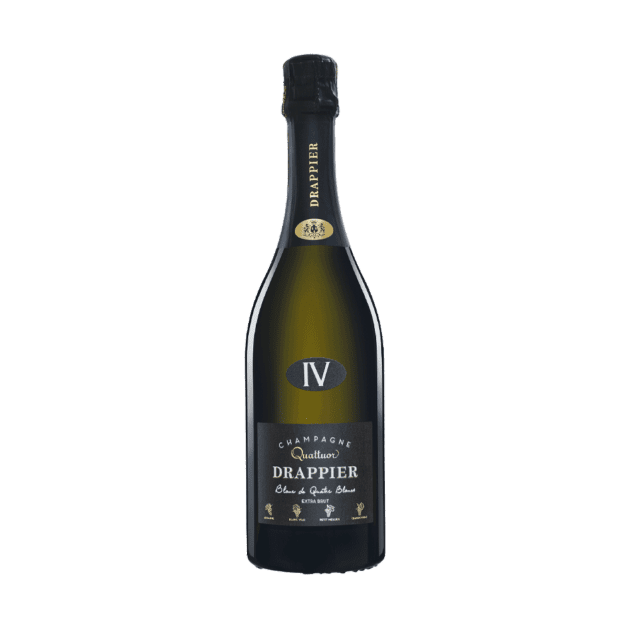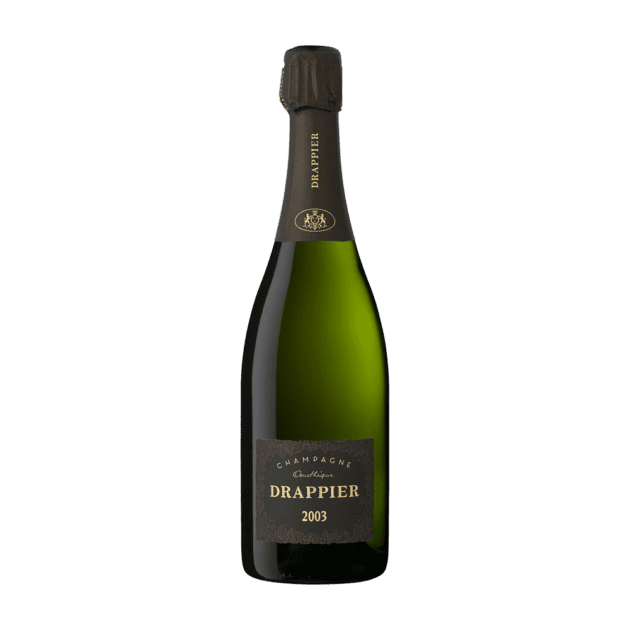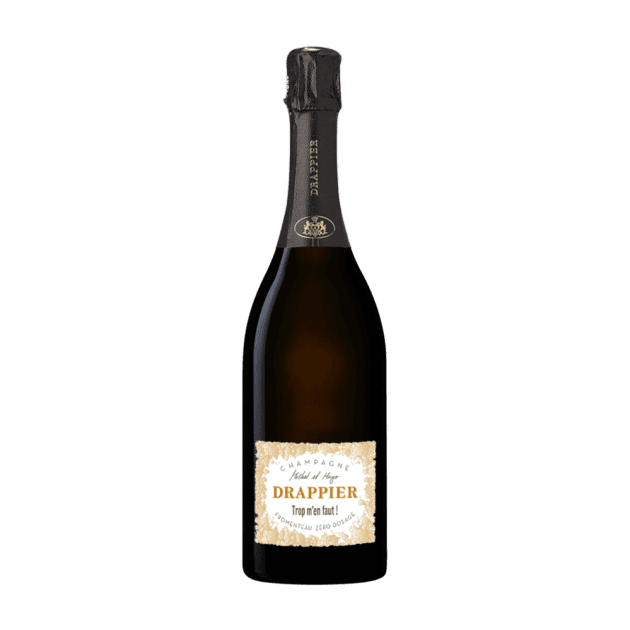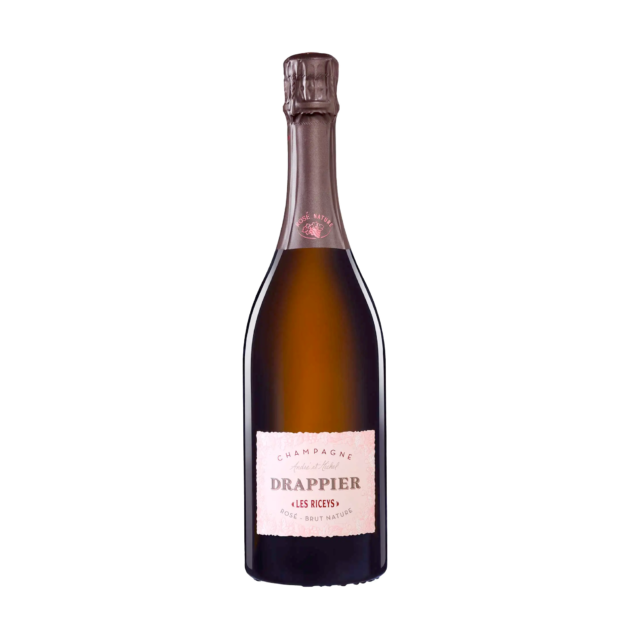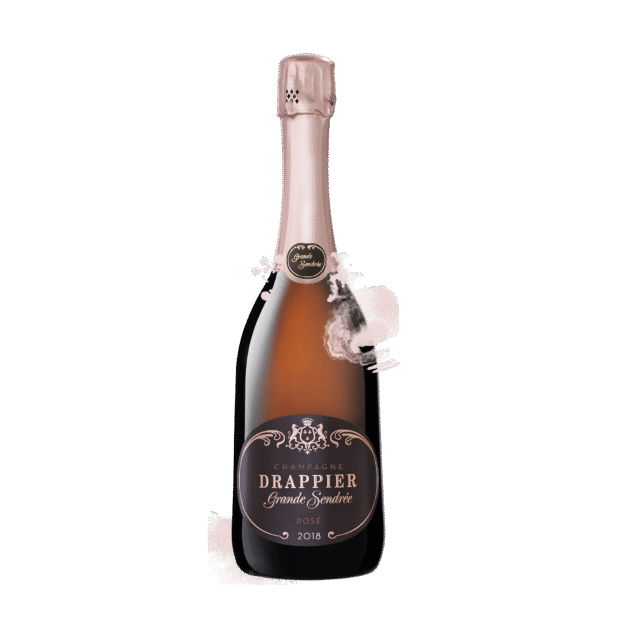
For the 3rd year in a row, Drappier has made the list of the
Top 20 Champagne Brands
in Shanken’s Impact Newsletter.
CHAMPAGNE DRAPPIER
- 100% independent, family-owned, family-run (8th generation)
- Champagne from Côte des Bar, growing on Jurassic Kimmeridgian limestone
- One of the few producers growing the 7 grapes varieties of the appellation
- Using indigenous yeast (DFM – Drappier Fermentum Meum), local wood, making its own liqueur de dosage aged in oak for 8 to 40 years.
- Only carbon-neutral estate in Champagne, since 2015
- Largest organic certified vineyard in Champagne
- A Champagne for wine lovers: vinous, expressive, long finish.
Drappier Handcrafted Champagne
~ The largest organic grower in Champagne ~ Estate produced ~ Organically farmed ~ Handcrafted for 8 generations
- A family-owned winery founded in 1808, currently run by 3 generations of the Drappier family.
- The Estate is located on an old abbey cellar, built in 1152.
- Favorite Champagne of Charles de Gaulle; still poured at the French Presidency
Style
- Natural approach, authenticity of the wines.
- We highlight the multifaceted aspects of our terroir, our varieties and our winemaking.
- Wines are pure and full of character, pairing superbly with food.
- Michel Drappier was one of the pioneers to release a Zero Dosage Champagne more than 30 years ago
Winemaking
- Low sulfites to no sulfites. Low dosage using a house-made liquor
- Big formats: unique in Champagne, Drappier produces up to 30L bottles, carrying out the “prise de mousse” in the original bottle.
Vineyards
- 60 hectares of vineyard owned, including 15 hectares certified organic.
- Located in the Aube region, in South Champagne, famous for its Pinot Noir, but also growing Chardonnay, Pinot Meunier and old varieties: Arbanne, Petit Meslier, Blanc Vrai
Drappier in the News…
Drappier becomes first to grow all eight Champagne grapes
By Patrick Schmitt
Speaking earlier this year at an event in London, Michel Drappier, who heads up the family-owned grower and négociant, said that he would be planting the latest grape to be approved for use in making Champagne.
As one of the very few in the region to currently grow and use the seven grapes of Champagne, by planting the eighth, he is now the first to have all the authorised varieties of the region.
The long-standing seven grapes of Champagne include the three well-known varieties of the region – Chardonnay, Pinot Noir and Meunier – as well as a further four rarely-seen grapes, which are Petit Meslier, Arbane, Pinot Blanc and Fromonteau (the local name for Pinot Gris).
Michel, speaking to a mixture of UK press and trade buyers in March, said that he was “proud to plant all seven” grapes of Champagne, and “will plant the eighth next month”.
Champagne Drappier Carte D'Or
Champagne Drappier explains philosophy behind brut nature range
By Michael Huband – The Drinks Business
Brut nature may be on trend, but Champagne Drappier has advocated making low dosage wines for three decades.
Trends are a fickle business – in search of the next big thing, almost anything could be declared ‘on-trend’. As lower-dosage wines broke through in wine bars in the 2000s, their status might have seemed precarious, but the clear evidence now is that drier styles have increased their market share.
At Champagne Drappier, however, the trend is dovetailing with a longer-term project. The house has seen many trends come and go since it began production in 1808. However, under the direction of Michel Drappier, brut nature wines have been a project of the last three decades.
Their origins date to 1992, when Drappier made the first experimental bottles of a Pinot Noir-led brut nature. This was then added to the range as a permanent fixture in 1995. Predating the recent trend, it is evidence of the house’s philosophy: making brut nature Champagnes as a statement of quality, rather than as fashionable curiosities.
Read the entire Drinks Business article here…
Champagne Drappier Specialties
CHAMPAGNE DRAPPIER Rosés
A Family Business since 1808
The Drappier family tree can be traced back to the seventeenth century, when Rémy Drappier was born in 1604. He later became a cloth merchant in Reims, like Nicolas Ruinart. His grandson, also called Nicolas (1669-1724), was prosecutor to King Louis XIV of France. It was not until 1808 that one of the House’s ancestors, François, settled in Urville and started to farm a vineyard spanning several hectares.
In the early 1930s, the vineyard suddenly became a topic of heated discussion in Urville. Georges Collot, Michel Drappier’s maternal grandfather, decided he would be the first to replant the Pinot Noir grape in the canton. His decision made waves, and earnt him the nickname le ‘Père Pinot’ or ‘Old Man Pinot’. This grape variety now represents 70% of the Drappier vineyard, and of the percentage cultivated in the Aube region, proving sceptics wrong.
In 1952, André et Micheline Drappier created the Drappier Carte d’Or vintage, with its distinctive yellow label. Each bottle contains aromatic notes reminiscent of quince jelly. After the historic frost of 1957 (which destroyed 95% of the harvest), André decided to introduce a new grape, Pinot Meunier, which was more resistant to spring frosts.
In 1968, Micheline suggested they produced a Rosé Champagne, and decided it would be made with 100% Pinot Noir grapes. Fifty years later, the Champagne Drappier Rosé de Saignée enjoyed huge success, and was even poured at the Elysée Palace.
Michel Drappier now manages the vinification process (and has done since 1979), while André Drappier – with 74 harvests of experience – keeps a close eye over the vineyard, which spans over 62 hectares (or 1,000 hommées, the agricultural measure used in the region) of land owned by the estate, and 50 hectares in contractual arrangements with other growers.
In 1988, deep cellars that had been dug into the chalk around Reims during the reign of Napoleon III, became part of the family estate. In these cool underground tunnels lie the most precious bottles, in particular the Grande Sendrée, perfected by our most faithful ally: time.
Since 2016, the eighth generation of the Drappier family has joined Michel and his wife Sylvie, to work on the family business. Charline, born in 1989, is gradually taking over marketing, while her brother, Hugo, born in 1991, is responsible for viticulture and oenology. Antoine, born in 1996, shows a keen interest in animals and nature, and ploughs part of the organically-farmed vineyard with his horse. The Drappier estate also includes some old orchards, a vegetable garden, and a farmyard. It has now earned the well-deserved accreditation of “Carbon Neutral”.
Drappier and General Charles de Gaulle
In 1965, a Drappier Pinot Noir vintage was enjoyed by General Charles de Gaulle and his family at Colombey-les-deux-Églises. He was one of many enchanted by the distinct character of Champagne Drappier. At that time, General Charles de Gaulle was the House’s most famous customer, and his favourite champagne was served at La Boisserie, his private residence near Urville. In 1990, to mark the 50th anniversary of the Appeal of 18 June, the vintage Champagne Drappier Charles de Gaulle was created in memory of the great figure of French history.











